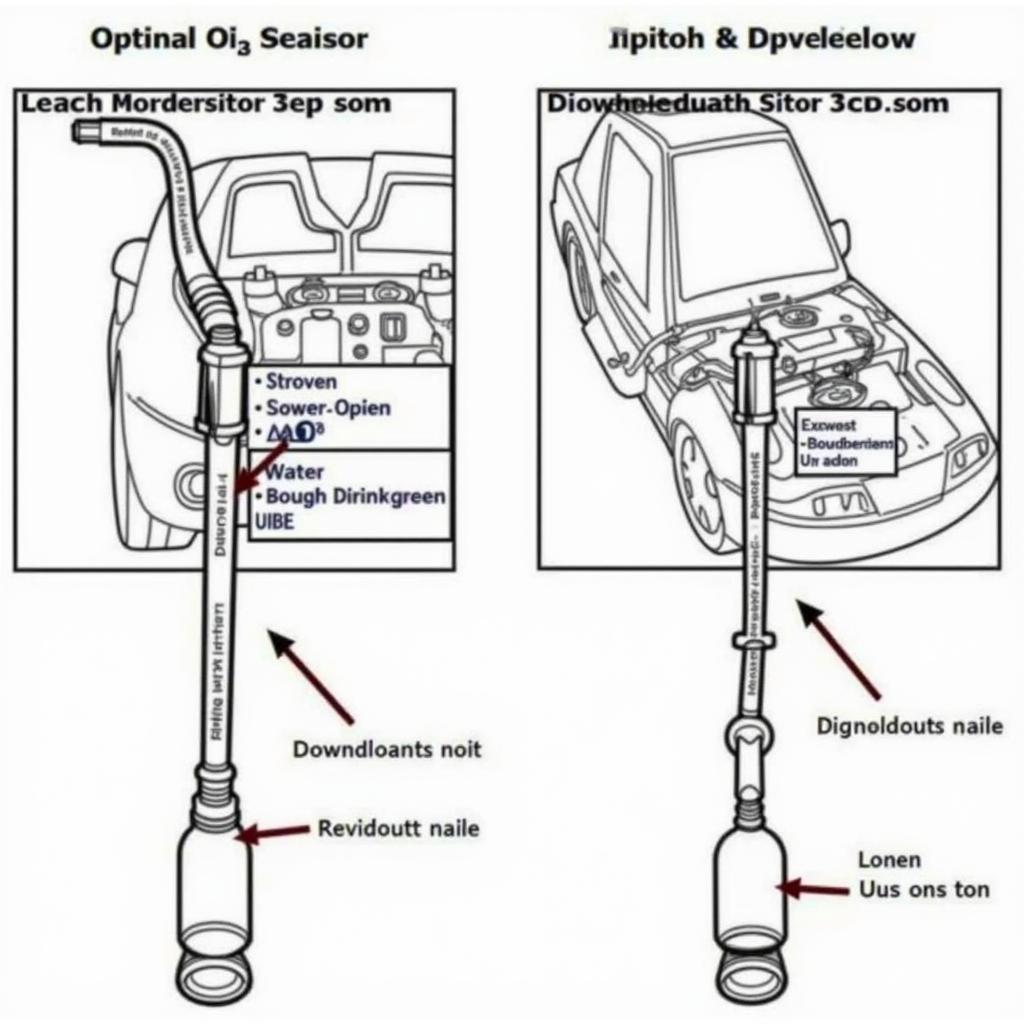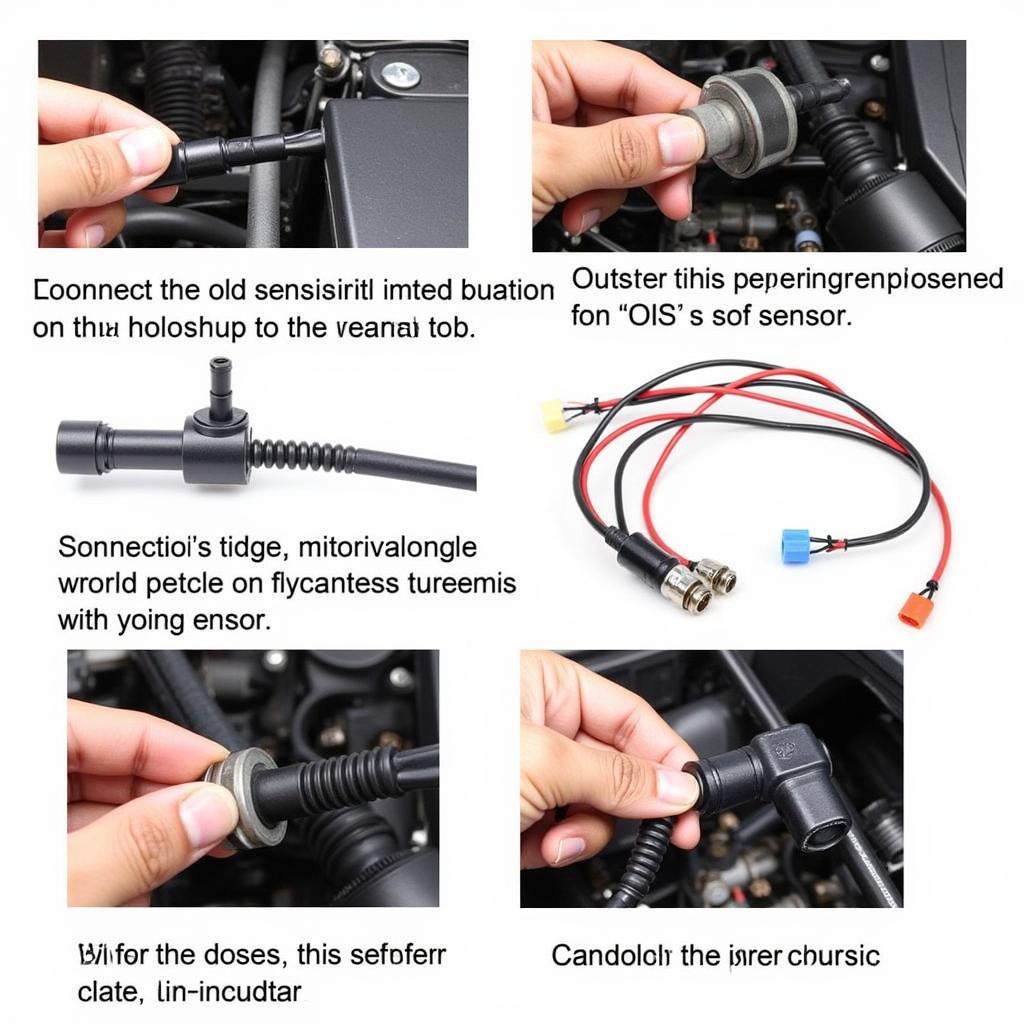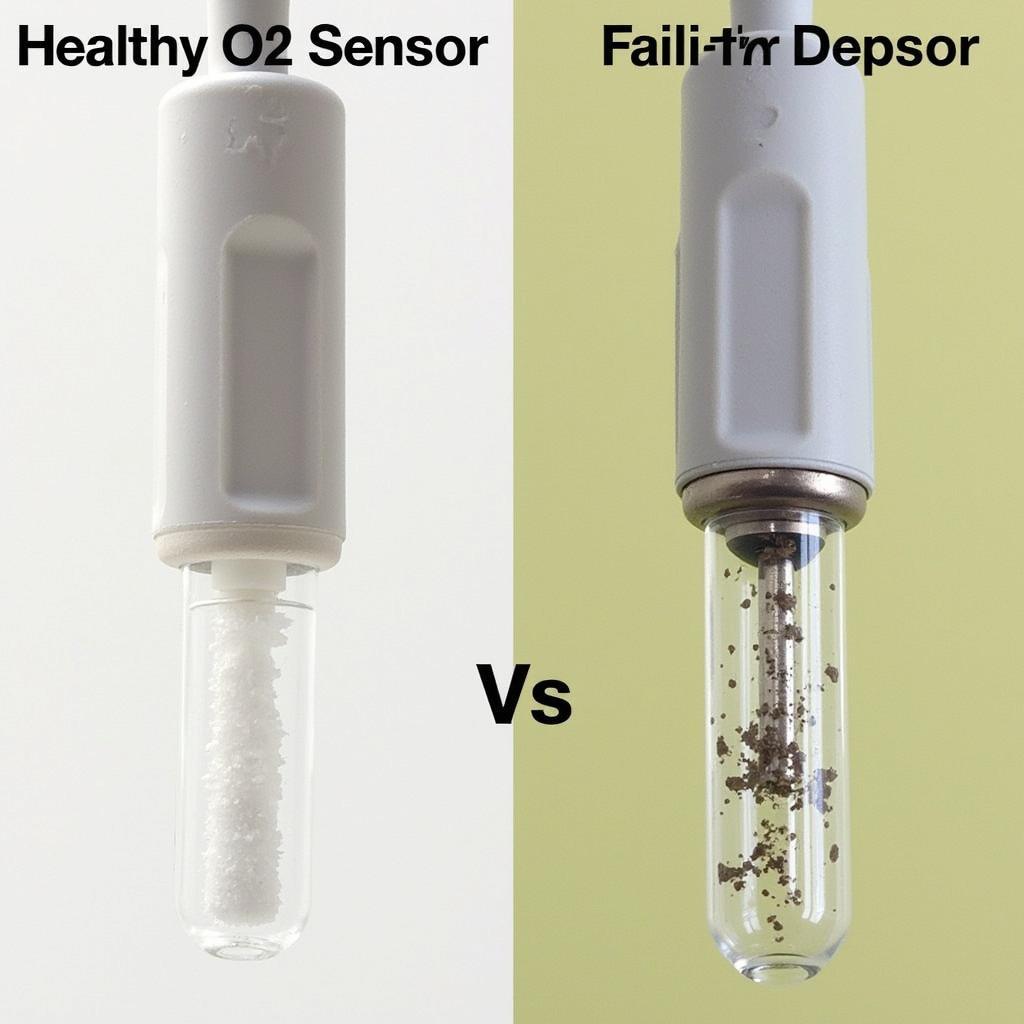Do I Need To Fix O2 Sensor In The Car? It’s a question many car owners ask themselves, especially when that pesky check engine light illuminates. The oxygen sensor, or O2 sensor, plays a crucial role in your vehicle’s performance and emissions. This article will help you understand the function of the O2 sensor, recognize the signs of a failing sensor, and decide if a replacement is necessary.
Understanding the Role of the O2 Sensor
The O2 sensor monitors the amount of unburnt oxygen in your car’s exhaust. This information is relayed to the engine control unit (ECU), which adjusts the air-fuel mixture to achieve optimal combustion. A properly functioning O2 sensor ensures efficient fuel consumption, reduces harmful emissions, and helps maintain optimal engine performance. There are usually two types of O2 sensors: upstream and downstream. The upstream sensor, located before the catalytic converter, primarily influences fuel mixture. The downstream sensor, located after the converter, monitors its effectiveness.
Signs Your O2 Sensor Needs Attention
Several symptoms can indicate a failing O2 sensor. Recognizing these signs can save you money and prevent further damage to your vehicle. Common symptoms include:
- Decreased Fuel Economy: A malfunctioning O2 sensor can cause your car to burn more fuel than necessary.
- Rough Idling or Misfires: The engine may stumble or hesitate at idle or during acceleration.
- Increased Emissions: A failed sensor can cause your car to fail emissions tests.
- Illuminated Check Engine Light: While this can indicate numerous issues, a faulty O2 sensor is a common culprit.
- Sulfur Smell from Exhaust: A strong rotten egg smell could indicate a failing sensor.
 Failing O2 Sensor Symptoms
Failing O2 Sensor Symptoms
Diagnosing a Faulty O2 Sensor
While the symptoms mentioned above can point towards a faulty O2 sensor, a proper diagnosis is essential. Using an OBD-II scanner can retrieve specific trouble codes related to the O2 sensor. These codes will pinpoint the exact location and nature of the problem. Alternatively, a qualified mechanic can perform a diagnostic test.
Do I Need to Fix O2 Sensor in the Car Immediately?
While a failing O2 sensor might not necessitate immediate repair, ignoring it for extended periods can lead to more significant problems. Driving with a faulty sensor can damage the catalytic converter, a costly component to replace. Moreover, continued driving with a bad O2 sensor will negatively impact fuel economy, wasting your money.
 O2 Sensor Location and Types
O2 Sensor Location and Types
Replacing the O2 Sensor: DIY or Professional?
Replacing an O2 sensor can be a DIY project for those mechanically inclined. However, it involves working with hot exhaust components and specialized tools. If you’re unsure, it’s best to consult a qualified mechanic. They have the necessary expertise and equipment to replace the sensor quickly and correctly.
“A simple O2 sensor replacement can prevent costly repairs down the road,” advises John Miller, a seasoned automotive technician with over 20 years of experience. “It’s a small investment for significant peace of mind.”
Preventing O2 Sensor Problems
While O2 sensors have a limited lifespan, proper maintenance can help prolong their life. Regularly scheduled tune-ups, using quality fuel, and addressing engine misfires promptly can contribute to a healthy O2 sensor.
 Replacing O2 Sensor Process
Replacing O2 Sensor Process
Conclusion: Do I Need to Fix O2 Sensor in the Car?
Understanding the importance of the O2 sensor and recognizing the signs of failure is crucial for maintaining your car’s health and performance. If you suspect a problem with your O2 sensor, don’t delay diagnosis and repair. Addressing the issue promptly can save you money and prevent further damage. Need further assistance? Connect with the experts at AutoTipPro at +1 (641) 206-8880 or visit our office at 500 N St Mary’s St, San Antonio, TX 78205, United States.
“Regular maintenance is key to preventing O2 sensor issues,” adds Sarah Johnson, an automotive engineer specializing in emissions control. “Prevention is always better than cure.”
 Healthy vs. Failing O2 Sensor
Healthy vs. Failing O2 Sensor
FAQ
-
How long do O2 sensors typically last? O2 sensors generally last between 60,000 and 90,000 miles.
-
How much does it cost to replace an O2 sensor? The cost can vary depending on the make and model of your car, but it typically ranges from $100 to $300.
-
Can I drive with a bad O2 sensor? While you can drive with a bad O2 sensor, it’s not recommended. It can damage your catalytic converter and decrease fuel economy.
-
How can I prevent O2 sensor problems? Regular tune-ups, using quality fuel, and addressing engine misfires promptly can help prevent O2 sensor problems.
-
What are the symptoms of a bad downstream O2 sensor? Symptoms of a bad downstream O2 sensor are similar to upstream but often less noticeable, primarily focusing on catalytic converter efficiency. The check engine light is usually the most obvious sign.
-
Can I clean my O2 sensor? While some people attempt to clean O2 sensors, it’s not generally recommended. Replacing the sensor is usually the most effective solution.
-
Where can I find a qualified mechanic to replace my O2 sensor? You can find qualified mechanics at reputable repair shops or dealerships.






Leave a Reply